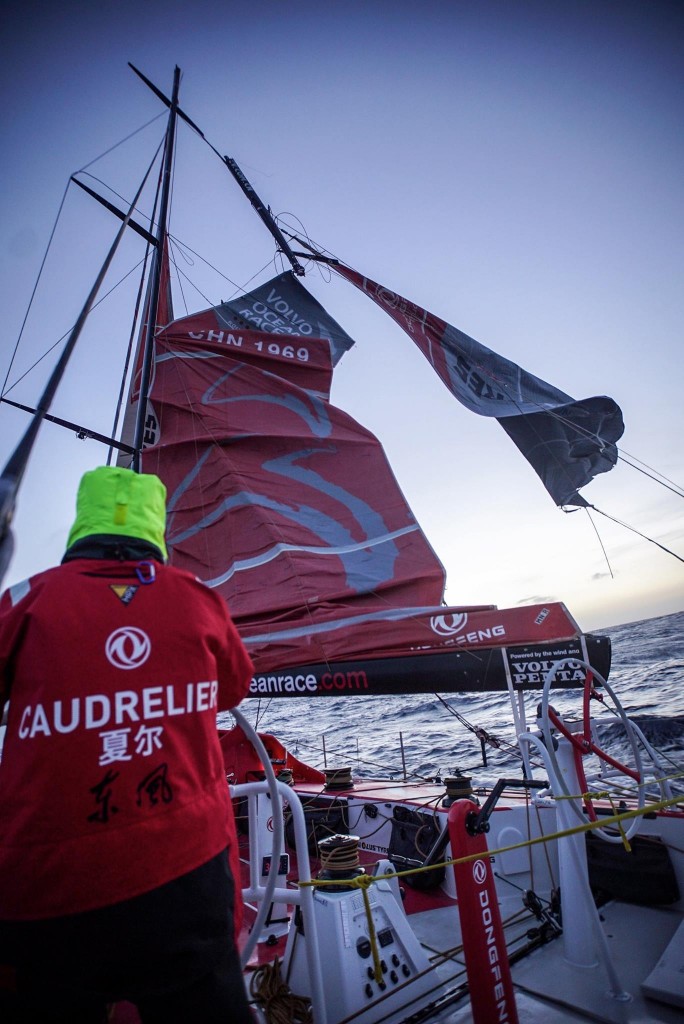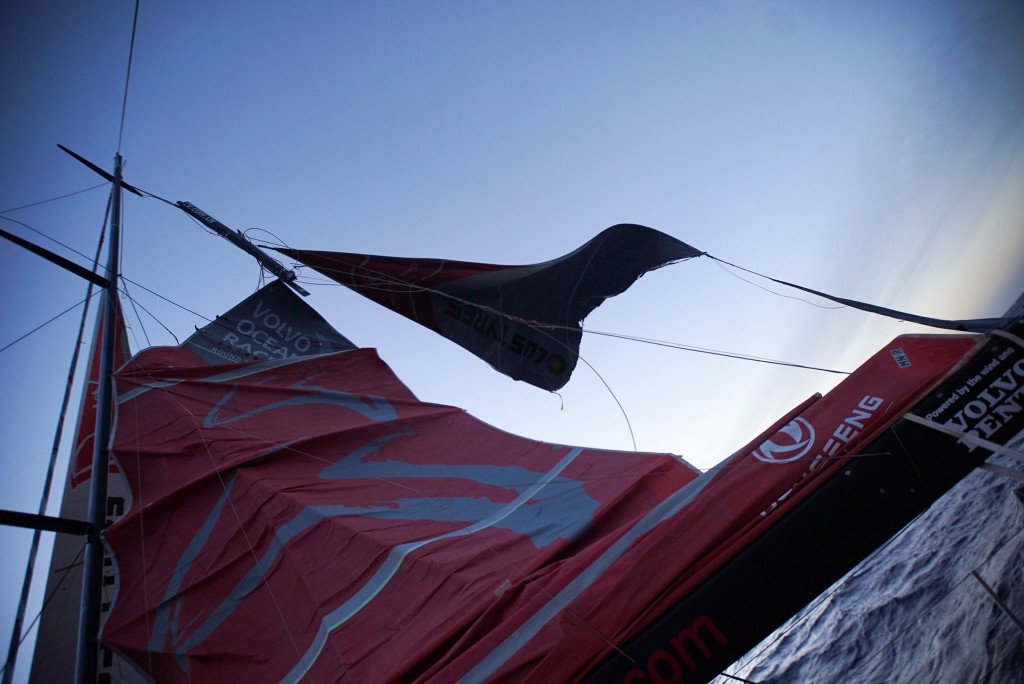What a difference a day makes. The headlines yesterday were pedal to the metal. Today dismasting. Heavy weather sailing is about knowing when to ease off the pedal.
Volvo Ocean Race can confirm that Dongfeng Race Team broke its mast early on Monday (GMT, March 30) but fortunately nobody has been injured and there is no immediate danger to the crew.
The incident happened 240 nautical miles west of Cape Horn at 0315 UTC on Monday, in the final hours of the night onboard Dongfeng.
The crew reported that the mast broke above the third spreader, the top section of the mast. They are not planning to continue racing on this leg and are heading towards Ushuaia, Argentina, under their own sail.
Reached via Inmarsat, a disappointed skipper Charles Caudrelier said: “I’m gutted. As you’ve seen from the position reports we have been, on purpose, backing off a bit, not attacking in any way.
“The mast broke without warning, in about 30 knots of wind. We are unable to sail safely on starboard tack, but we are able to make reasonable speed on port tack. We will head towards Ushuaia and assess our options for getting to Itajaí.”
The Maritime Rescue Coordination Centre (MRCC) is aware of the situation and is on standby to help if necessary.
We are in constant contact with Caudrelier and are establishing the full extent of the damage to ensure we give him the support he needs to deal with the situation.
|
Ears pinned back and foot to the floor (March 29, 2015; Day 13) – The Volvo Ocean Race may be a marathon, but at this stage of Leg 5 from Auckland to Itajaí, it’s pretty much a 350nm sprint east to Cape Horn. With winds from the northwest, the boats have now gybed their last gybe and stacked their last stack. Their ears are pinned back and have their foot to the floor, as the 30 knot winds and 2.5 to 3-metre waves are allowing the teams to see what the VO65s can do. “Now that we’ve all more or less settled in for a long port tack run to the east the big question on everyone’s mind is just how hard to push,” reports Amory Ross on Alvimedica. “If there’s anything we’ve learned so far this race it’s that the leaders aren’t afraid to redline the revs when challenged.” Apart from SCA, the entire fleet – separated by 20 nm between Donfeng to the north and Abu Dhabi to the south – has covered more than 500 nautical miles in the last 24 hours, with the top five averaging over 20 knots as they fight for the lead. But Ross reminds that trophies aren’t determined at Cape Horn. “We feel fast, as fast as anyone, and when you feel fast nobody wants to slow down because in the back of the mind we’re telling ourselves we can be first to the Cape,” observes Ross, with Alvimedica positioned to the north. “But this leg will be decided along the coast of Brazil, and if we push too hard now we may never give ourselves that chance.” Pulling the throttle back may occur soon as the sea state is about to get rough. Waves are expected to build over the next 24 hours as the sailors get closer to the continental shelf – and Cape Horn. As for SCA, with no fractional gennaker after damaging it earlier this week, they simply can’t match speed with the fleet. Forced to use the smaller J1 jib, they are suffering for speed and angle and, with reduced routing options, will continue to fall behind the pack now. Leg 5 (6,776 nm) Position Report (21:40 UTC) |


